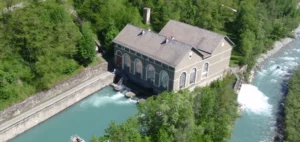In Tanzania, the Kakono hydropower plant will receive funding from the African Development Bank (AfDB) and the Agence Française de Développement (AFD) after the signing of a financing agreement. The agreements with the Tanzanian government were announced on the website of the Delegation of the European Union to the United Republic of Tanzania and the East African Community. The 87.8 MW power plant project, located in the Kagera region in the northwestern corner of Tanzania, will be built on the Kagera River near the border with Uganda and owned by the Tanzania Electric Supply Company Limited (Tanesco).
European partners provide €36 million to support the construction of the Kakono hydropower plant in Tanzania
The European Union is partnering with the AfDB and AFD to provide €36 million ($38.2 million). The funds will be used to provide technical assistance, environmental studies and capacity building. At the signing ceremony, Cedric Merel, head of cooperation of the European Union delegation, said the EU is pleased to contribute to the Tanzanian government’s efforts to diversify its energy sources and integrate green energy.
Kakono Hydroelectric Plant to Reduce Greenhouse Gas Emissions in Tanzania
The construction of the Kakono hydroelectric plant in Tanzania will contribute to the reduction of greenhouse gas emissions by 213,810 tons per year. This will have a significant impact on the country’s economic development and climate change adaptation. Merel emphasized that this action illustrates the European Union’s Green Deal and the Global Gateway. These two flagship strategies aim to promote renewable energy and invest in key strategic infrastructure in partner countries.
Continued commitment to the energy sector in Tanzania
The EU has pledged to support the energy sector in Tanzania with €180 million ($190.8 million). This funding is for energy sector reforms, energy efficiency, clean cooking, rural electrification and private sector investment and support.
This funding will strengthen Tanzania as a leader in clean and renewable energy production in East Africa. The country aims to reach a power generation capacity of 5,000 MW by 2025. Currently it is around 1,600 MW. The objective is to meet the growing demand for energy in the country. The Kakono hydroelectric power plant is an important step in achieving this ambitious goal.






















